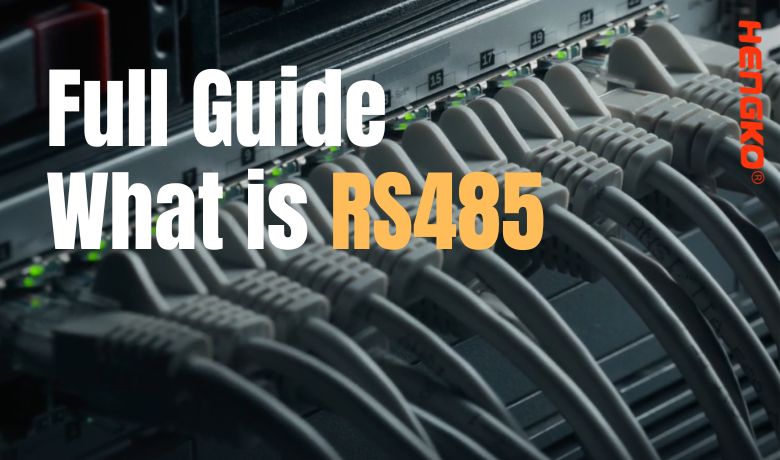Ryšio protokolų demistifikavimas jutiklių technologijose
The world of sensors is a captivating realm where tiny devices whisper secrets about the invisible. Whether it’s the temperature of a bustling cityscape, the humidity within a delicate greenhouse, or the vibration of a colossal machine, sensors translate these whispers into digital symphonies. But how do these whispers travel? How do these tiny musicians convey their insights to the outside world? This is where the magic of ryšių protokolai veikia kaip nematomi laidininkai, organizuojantys duomenų srautą iš jutiklio į imtuvą.
Tinkamo dirigento svarba:
Choosing the right communication protocol is not merely a technical detail; it’s the difference between a harmonious performance and a cacophony of confusion. Imagine a temperature sensor in a remote wind farm relying on a protocol ill-suited for long distances, or a humidity sensor in a critical medical setting battling noise interference that distorts its delicate readings. The consequences can be dire – from wasted resources to compromised processes and even potential risks to safety.
This is why understanding the strengths and limitations of different protocols is vital. In our next section, we’ll delve deeper into the fascinating world of serial communication, uncovering the unique characteristics of popular protocols like RS-232 and RS-485, and equipping you with the knowledge to choose the perfect conductor for your sensor’s symphony.
Išsamus vadovas apie RS485

In the previous part, we explored the crucial role of communication protocols in the grand symphony of sensor technology. Now, let’s turn our attention to a particularly powerful player in this orchestra: RS-485 (TIA/EIA-485).
1. RS-485 apibrėžimas:
Imagine you and your friend want to whisper secrets across a noisy cafeteria. Instead of shouting, you both cup your hands around your mouths, directing the sound toward each other’s ears. This is essentially what RS-485 does for sensors! It’s a communication protocol that relies on subalansuotas diferencinis signalas, kai duomenys perduodami dviem laidais, kuriais perduodama papildoma įtampa. Įsivaizduokite tai kaip savo šnabždesį, sustiprintą dviem nematomais laidais, kad jis būtų aiškus ir girdimas tarp kavinės triukšmo.
2. Darbo bendravimo principas:
Įsivaizduokite: vietoj dviejų draugų kavinėje paslaptimis dalijasi visa grupė. RS-485 leidžia kelių taškų tinklas, where up to 32 devices (or even more with repeaters) can connect to a single “bus” of twisted-pair cable. Each device listens for its specific address amidst the whispers on the bus, just like you would focus on your friend’s voice amidst the background chatter.
3. Savybės ir privalumai:
Here’s what makes RS-485 truly shine:
- Ryšys per atstumą: Įsivaizduokite, kad šnabždate savo paslaptį per visą futbolo aikštę! RS-485 gali patikimai perduoti duomenis iki 1200 metrų atstumu, o tai gerokai viršija kitų protokolų apribojimus.
- Atsparumas triukšmui: Remember those annoying cafeteria noises? RS-485’s balanced signaling cancels out common-mode noise (like electromagnetic interference), ensuring your whispers reach their destination crystal clear.
- Daugelio įrenginių tinklai: Reikia surinkti paslaptis iš visos draugų komandos? RS-485 leidžia vienu kabeliu prijungti kelis jutiklius, todėl mažiau sudėtinga prijungti laidus ir paprasčiau rinkti duomenis.
- Didesnis duomenų perdavimo greitis: Norite greitai pasidalyti savo paslaptimis? RS-485 užtikrina iki 10 Mb/s duomenų perdavimo spartą, kuri idealiai tinka realaus laiko stebėjimo ir valdymo programoms.
4. RS-485 laidai:
Įsivaizduokite vytos poros kabelį kaip nematomą virvelę, jungiančią jus ir jūsų draugus kavinėje. Kiekvienas įrenginys prie magistralės jungiasi dviem laidais (A ir B), todėl užtikrinamas subalansuotas perdavimas ir atsparumas triukšmui.
5. Subalansuotas diferencinis signalizavimas ir atsparumas triukšmui:
Remember those amplified whispers? The two wires in RS-485 carry voltages that are mirror images of each other. Any noise affecting both wires equally gets canceled out, leaving only the clear “whisper” of data. Imagine your friend cupping their hand around your ear again, muffling out the cafeteria noise and delivering your secret directly.
6. Daugelio taškų tinklo topologija:
Picture the cafeteria bustling with secret-sharing friends. Each friend has a unique address, just like each sensor on an RS-485 network. The “bus” carries all the whispers simultaneously, but each sensor only listens for its specific address, like a friend tuning out everyone else’s conversations.
7. Bendrosios programos:
RS-485’s powerful features make it a go-to protocol for various applications, including:
- Pastatų automatizavimo sistemos (BAS): Temperatūros, drėgmės ir kitų aplinkos veiksnių stebėjimas dideliuose pastatuose.
- ŠVOK kontrolės sistemos: Efektyvus pastatų šildymo, vėdinimo ir oro kondicionavimo valdymas.
- Žemės ūkio ir šiltnamių stebėsena: Stebėkite temperatūrą, drėgmę ir saulės šviesos lygį, kad pasėliai optimaliai augtų.
- Pramoninių procesų valdymas: Temperatūros, slėgio ir kitų parametrų stebėjimas ir kontrolė gamyklose ir elektrinėse.
- Aplinkos stebėjimo sistemos: oro kokybės, vandens kokybės ir kitų aplinkos veiksnių stebėjimas įvairiose aplinkose.
By harnessing the power of RS-485, these applications can operate more efficiently, optimize resources, and gain valuable insights from sensor data.
Full Guide about RS232

While RS-485 steals the spotlight with its powerful network capabilities, RS-232, the grand old dame of serial communication, still deserves a standing ovation. Let’s explore this veteran protocol and see where it shines.
1. Defining RS-232:
Imagine you’re sending a handwritten note to a friend across the classroom. That’s essentially what RS-232 does! It utilizes single-ended signaling, where data travels on a single wire with a reference ground. Think of it as your penmanship scribbling the message on a piece of paper, carrying the information from point A to point B.
Unlike the whispering friends across the cafeteria in our RS-485 analogy, RS-232 is strictly a point-to-point protocol, connecting only two devices directly. Imagine holding your note right up to your friend’s face so they can read it one-on-one.
2. Darbo bendravimo principas:
Data in RS-232 is represented by voltage levels. A positive voltage signifies binary “1,” while a negative voltage indicates binary “0.” The receiver deciphers these voltage changes to interpret the message, just like your friend decodes your handwriting to understand your note.
3. Savybės ir privalumai:
While RS-485 boasts extensive networks and long distances, RS-232 has its own charm:
- Simplicity: Its single-wire setup makes it easy to implement and understand, perfect for beginners or simple applications.
- Low cost: Compared to more complex protocols, RS-232 hardware and cables are generally inexpensive.
- Reliable communication: For short distances (up to 50 feet), RS-232 offers reliable data transmission with minimal interference.
4. RS-232 Wiring:
Imagine tying your note to a string and tossing it across the classroom – that’s roughly how an RS-232 connection works. One cable with two or more wires (depending on the specific implementation) connects the two devices directly.
5. Common Applications of RS-232:
Despite the rise of newer protocols, RS-232 still finds its place in several situations:
- Legacy equipment: Many older devices like printers and scanners still rely on RS-232 for communication.
- Industrial settings: Simple sensors and control systems in factories may utilize RS-232 for their reliable, point-to-point communication.
- Serial port access: Some computers still offer RS-232 ports for connecting specialized devices or debugging purposes.
While not the king of the network jungle, RS-232 remains a valuable tool in the tech toolbox. Its simplicity, reliability, and affordability ensure its continued relevance in specific niches. Remember, sometimes a handwritten note delivered directly can be just as impactful as a broadcast message!
What is the Modbus protocol?
We’ve explored the silent orchestra of communication protocols used by sensors, unraveling the strengths of RS-485 and the legacy of RS-232. Now, let’s turn our attention to a crucial interpreter in this data symphony: the Modbus protocol.
Imagine you have a team of multilingual scientists conducting experiments in a remote jungle. They need a common language to share their findings with each other, regardless of their native tongue. Modbus acts as that universal translator, enabling different types of sensors and devices to communicate effectively.
In simplest terms, Modbus is a client-server protocol used for data exchange between industrial devices. Think of it as a set of rules and commands that allow sensors (clients) to send collected data and receive instructions from control systems (servers).
Here’s what makes Modbus a vital player in the world of sensor technology:
- Open and royalty-free: Unlike some proprietary protocols, Modbus is open-source and free to use, making it accessible and adaptable for various applications.
- Simple and efficient: Its straightforward commands and minimal data overhead make it efficient for transmitting essential sensor data without complex calculations.
- Versatile and scalable: Modbus supports a wide range of data types and addresses multiple devices (up to 247) on a single network, making it scalable for diverse sensor systems.
- Reliable and error-proof: Built-in error checking and data verification mechanisms ensure accurate and reliable data transmission, crucial for critical operations.
But how does Modbus work? Let’s imagine our multilingual scientists again:
- The Client Initiates: A sensor (client) identifies itself with its unique address and sends a specific request to the control system (server). The request could be asking for its own data to be read, sending new data, or even changing a setting.
- The Server Responds: The server deciphers the request, accesses the requested information or executes the command, and sends a response back to the client.
- Confirmation and Repeat: The client verifies the response for accuracy and, if necessary, can repeat the request for additional data or actions.
Common Applications of Modbus:
Modbus’s versatility makes it a go-to protocol for various applications, including:
- Building Automation Systems: Monitoring and controlling temperature, humidity, and other factors in buildings.
- Pramoninių procesų valdymas: Monitoring and regulating parameters in factories, power plants, and other industrial settings.
- Renewable Energy Systems: Collecting data from solar panels, wind turbines, and other renewable energy sources.
- Water Treatment and Distribution: Monitoring and controlling water levels, pressure, and quality in water treatment plants and distribution systems.
By understanding Modbus, you gain access to a powerful tool for unlocking the insights hidden within sensor data. This versatile protocol acts as the interpreter, translating the whispers of sensors into a language we can understand and utilize for efficient monitoring, control, and optimization in various industries.
Difference and Advantage RS485 and RS232
When it comes to connecting sensors and transmitting their data, choosing the right communication protocol is crucial. Two prominent contenders in this arena are RS-485 ir RS-232. But which one reigns supreme? Let’s delve into their differences and advantages to find out!
1. Network Topology:
- RS-485: A true networker, RS-485 shines in multi-point communication, allowing up to 32 devices (even more with repeaters) to connect to a single cable like a digital daisy chain. Imagine a bustling marketplace where multiple vendors share information across a central hub.
- RS-232: A lone ranger, RS-232 thrives in point-to-point connections, linking only two devices directly like a private conversation. Picture two friends whispering secrets across a table.
2. Communication Range:
RS-485: This long-distance runner boasts impressive reach, sending data reliably for up to 1,200 meters (4,000 feet). Think of it as shouting secrets across a football field and being heard loud and clear.
RS-232: A sprinter, but not a marathoner, RS-232 is reliable for shorter distances of up to 50 feet. Imagine whispering across a classroom and hoping your friend catches every word.
3. Noise Immunity:
RS-485: This noise-canceling champion utilizes subalansuotas diferencinis signalas, where data travels on two wires carrying complementary voltages. Any noise affecting both wires equally gets canceled out, ensuring a clear signal amidst the din.
RS-232: More susceptible to interference, RS-232 uses single-ended signaling, where data travels on a single wire with a reference ground. Noise on the ground wire can disrupt the signal, like unwanted chatter interrupting your whisper.
4. Data Rate:
RS-485: A speed demon, RS-485 can transmit data at rates of up to 10 Mbps, ideal for real-time monitoring and control applications where quick reactions are crucial.
RS-232: A steady but slower traveler, RS-232 offers data rates of up to 115.2 kbps, sufficient for basic data collection and control in less demanding situations.
5. Wiring and Cost:
RS-485: Requires twisted-pair cabling for balanced signaling, which can be slightly more expensive than the single wires used in RS-232. However, the ability to connect multiple devices on a single cable can offset the initial cost advantage of RS-232.
RS-232: Simpler wiring with single wires makes it cheaper to implement but limits its network capabilities.
Advantages of RS-485:
- Ideal for large-scale sensor networks: Connects numerous devices over longer distances, perfect for building automation, environmental monitoring, and industrial settings.
- Noise-resistant: Balanced signaling ensures reliable data transmission even in noisy environments.
- Faster data rates: Enables real-time monitoring and control for applications requiring swift responses.
Advantages of RS-232:
- Simple and inexpensive: Easy to implement and requires minimal hardware, making it suitable for basic setups.
- Reliable for short-distance communication: Perfect for connecting single devices where long-range or networking capabilities are not necessary.
- Legacy compatibility: Widely used in older equipment, ensuring compatibility with existing infrastructure.
Choosing the Right Protocol:
The best protocol depends on your specific needs:
- For large-scale networks, long distances, and noise-prone environments, RS-485 is the clear winner.
- For simple setups, short-distance connections, and cost-effectiveness, RS-232 remains a viable option.

How to Choose RS485 and RS23 ?
Choosing the right communication protocol for your sensor network can significantly impact its performance, efficiency, and overall success. Two prominent contenders in this arena are RS-485 and RS-232, each with its own set of strengths and limitations. To help you make an informed decision, here’s a side-by-side comparison of their key differences and advantages:
| Funkcija | RS-485 | RS-232 |
|---|---|---|
| Network Topology | Multi-point (up to 32 devices on a single bus) | Point-to-point (connects only two devices) |
| ![RS-485 multi-point network diagram] | ![RS-232 point-to-point network diagram] | |
| Communication Range | Up to 1,200 meters (4,000 feet) | Iki 50 pėdų |
| Noise Immunity | High – uses balanced differential signaling to cancel out common-mode noise | Lower – susceptible to interference on the ground wire |
| Data Rate | Up to 10 Mbps | Up to 115.2 kbps |
| Wiring | Twisted-pair cable (slightly more expensive) | Single wires (less expensive) |
| Išlaidos | Higher initial cost due to wiring and hardware | Lower initial cost |
| Advantages | Ideal for large-scale networks, long distances, noise-resistant, faster data rates | Simple and inexpensive, reliable for short distances, legacy compatibility |
| Paraiškos | Building automation, environmental monitoring, industrial control, renewable energy systems | Simple sensors, control systems, older equipment |
Choosing the Right Protocol:
The best protocol for your sensor network depends on your specific needs and priorities. Here’s a quick guide to help you decide:
Choose RS-485 if:
- You have a large-scale network with multiple sensors spread over a wide area.
- Your environment is prone to electrical noise or interference.
- You need real-time data transmission for fast response applications.
Choose RS-232 if:
- You have a simple setup with only one or two sensors.
- Cost is a major concern.
- You need to connect to older equipment that uses RS-232.
Explore the Potential of RS485
The world of sensor technology is ever-evolving, and staying ahead means embracing the best solutions available. RS485 offers a realm of possibilities with its advanced features, making it an ideal choice for robust and efficient temperature and humidity monitoring. If you’re looking to upgrade your sensor network or seeking reliable and scalable communication protocols, RS485 presents a compelling solution.
For further inquiries, personalized consultations, or to explore our range of
RS485-enabled temperature and humidity sensors, feel free to reach out to us.
Contact us at:
- Email: [sales@hengkometer.com]
- Phone: [+86-755-88823250]
- Website: [www.hengkometer.com]
We are committed to helping you achieve optimal performance and efficiency in your sensor networks.
Let’s harness the power of RS485 together!






